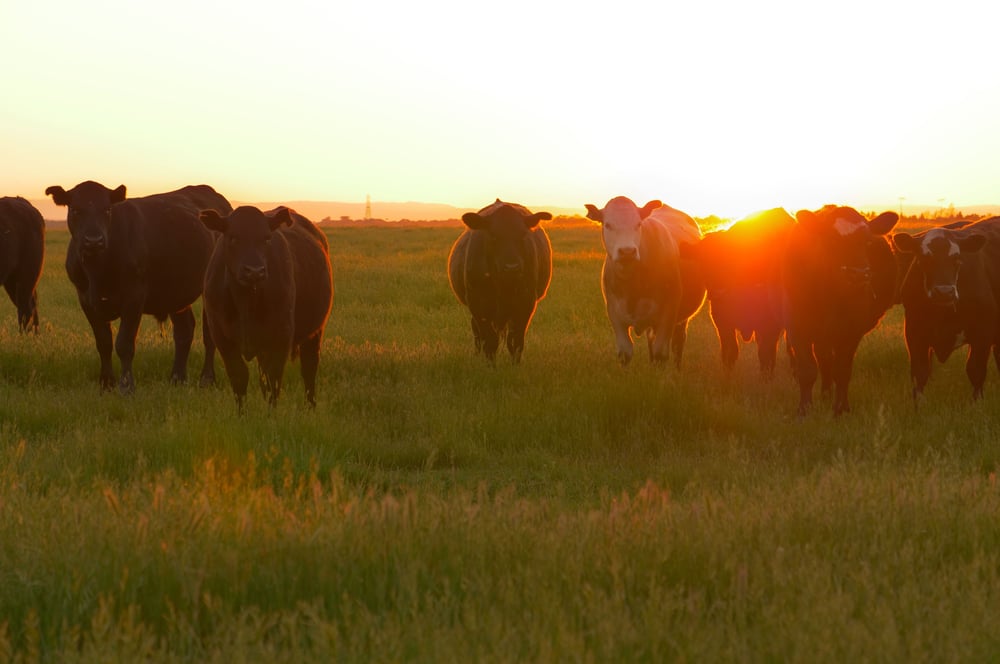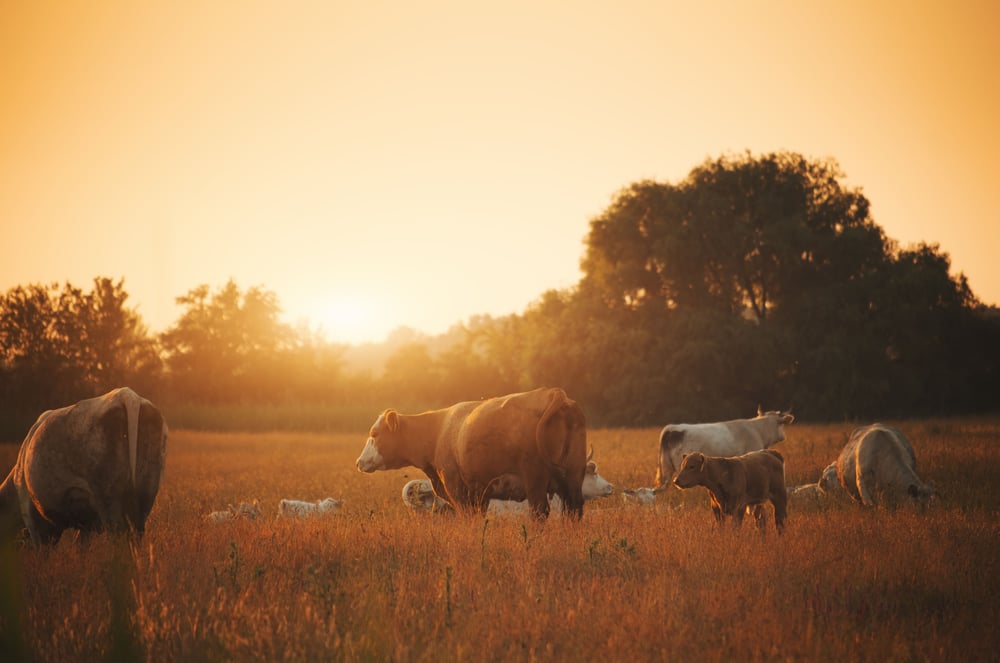TrustBIX Blog: Carbon Footprints on the Sands of Time – the Role of the Agri-Food Industry

Almost every step we take in our daily life leaves a carbon footprint: turning on the light in the bathroom, running on a treadmill, driving to work, buying another pair of jeans
We’ve been told that humans, through transportation, electricity generation, and industrial activities, are the most significant contributors to Greenhouse Gas (GHG) emissions. However, we know that drinking milk and eating meat also adds up to GHG content in the atmosphere, so the reality is – our generation and industry have to change.
According to the Inventory of U.S. Greenhouse Gas Emissions and Sinks, agriculture makes up about 10% of total U.S. GHG emissions, with livestock contributing almost 4% of total U.S. GHG emissions. The stats are very similar for Canada. However, the same Inventory tells us that from 2018 to 2019, emissions decreased by 1.7 percent after accounting for sequestration from the land sector. So, what is carbon sequestration, and how can we move forward? Are there other mitigation strategies the sector is employing? Keep reading to find the answers.
“At TrustBIX, we’re proud to be able to be working to address these issues and reduce the carbon footprint from livestock production by working with partners and producers“
Carbon and methane from the beef and dairy industry
While many people think that the main threat in terms of GHG emissions is carbon dioxide, when it comes to livestock, we should also consider methane. There are two major ways methane is produced in the beef and dairy industry: by enteric fermentation and manure management.
(TrustBIX: Adobe stock)
Enteric fermentation is the process where plant materials are decomposed and fermented by microbes which results in several by-products, one of which is methane. It’s then expelled by the animal through burping. While every year one cow produces around 220 pounds of methane, feedlot animals on high grain rations are not contributing that volume of methane, and the feedlot industry has been one of the most proactive in reducing emissions. With the global cattle population amounting to about one billion head in 2021, the numbers are impressive and do not cast a favourable light on beef production.
Manure, being a fantastic soil amendment and a big part of the agricultural industry in general, is also a source of methane and other GHGs. While the amount of methane emitted during manure decomposition depends on a long list of factors, such as the animal type, the amount of feed, temperature and moisture levels, it’s crucial to use the most efficient manure handling methods.
But why should we care about it?
Global warming and climate change are the short answer. The thing is that methane is a gas 28 times more powerful than CO2 in terms of warming the planet. On a positive note, methane’s lifespan is very short compared to other greenhouse gases, only 12 years, which means that if we find effective ways to reduce the amount of methane, we’ll manage to cool the atmosphere. And here’s how we’re doing it right now.
Current mitigation practices
Feed additives are well-known sources of nutrients that affect the overall health and wellbeing of animals. Nowadays, modern feed additives are designed not only to support animals but also to reduce the amount of GHG emissions. For example, biochar, seaweed, essential oils and others can serve as great methane inhibitors without affecting milk yield and composition significantly. Of course, now they’re all being tested, and additional research is required to find out how such additives might affect productivity, reproduction, animal health, and welfare.
(TrustBIX: Adobe stock)
It’s also essential to match breed type to local conditions, especially in the beef and dairy sectors. When a breed is not adapted for the region where it’s used, productive efficiency can be reduced. That’s why matching breed with environmental conditions and management practices can improve productivity and reduce GHG emissions. Continued genetic improvement also assists with decreasing the carbon “hoofprint.”
Another practice we have touched upon in our previous blogs is carbon sequestration which can offset livestock-related carbon emissions. However, this potential must be considered in the context of the “carbon opportunity cost” of land use, in other words, the power of the land to store carbon when it’s not used for agriculture. Besides, changes in grazing management and herbage utilization, for example, might also affect and even enhance soil carbon sequestration.
Here, at TrustBIX, we’re proud to be able to be working to address these issues and reduce the carbon footprint from livestock production by working with partners and producers. We believe proper data collection, along with benchmarking, will lead to improved management practices and help us create a world where we trust more, waste less, and reward sustainable behaviour. Contact us today to learn more about data sharing and how it contributes to building trust and sustainability across the food supply chains.














